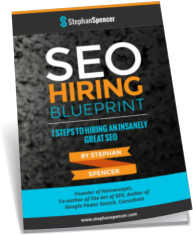So, all you online retailers revving up for the holiday shopping season and wondering what you might be inadvertently leaving on the table? Thinking perhaps that your products should be represented (or better represented) in the comparison shopping engines? Well, you’re not alone. Don’t stress too much, however, because the shopping engines (Yahoo! Shopping, Froogle, Shopping.com, Pricegrabber, MSN Shopping, Gifts.com, etc.) typically represent only a relatively small slice of etailers’ traffic. But there’s always room for improvement, and Alan Rimm-Kaufman and Larry Becker (of the Rimm-Kaufman Group) offer some valuable tips to maximize the shopping feed opportunity, such as:
- Set up an automated routine to remove discontinued items from your feeds. This should be done automatically each day or week. And continuously monitor your presence on the feeds. Most of the feeds will simply drop any URLs they consider malformed; only some will tell you when they do so.
- You need an algorithm that handles your entire product assortment. While some of the engines allow you to improve placement by bidding, many do not. Success depends then on what you send, and as we mentioned earlier, each feed requires its own recipe.
- You’ll also want to use product titles that reflect how most people describe the things you sell; jargon can make you hard to find.
- Work with your internal team or your search agency to establish a feed testing regimen. Test one feed algorithm against another. As always you’ll want to ensure that each URL has a unique tracking code identifying the specific product on your site and the engine where your ad is served.

 SIGN UP FOR EXCLUSIVE WEEKLY CONTENT
SIGN UP FOR EXCLUSIVE WEEKLY CONTENT 


I was hoping someone would actually have information on success stories. I am looking at submitting to 10 – 20 engines, but don;t know if it’s worth the effort.
Stephan, great article. I especially appreciated the “Get More from Your Shopping Feeds” article you linked to. Great selling points, some that I plan on using.
Michael
You mentioned Yahoo! Shopping, Froogle, Shopping.com, Pricegrabber, MSN Shopping, Gifts.com “typically represent only a relatively small slice of etailers’ traffic”. Have you any data, pie chart etc on how these feeds slice up in terms of traffic themselves? I’m looking at these feeds and Google and Yahoo! Shopping I’d guess would be the most popular. Any ideas?